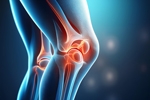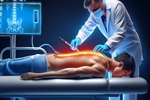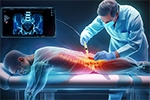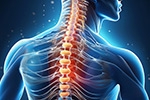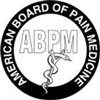Home » Blog
| Stem Cell, PRP, Acupuncture in Queens & Long Island, New York
Blog | Stem Cell, PRP, Acupuncture in Queens & Long Island, New York
Knee pain can arise from injuries, overuse, or chronic conditions like arthritis. Common causes include ACL tears, meniscus injuries, bursitis, and osteoarthritis. Poor habits like wearing unsupportive shoes or skipping warm-ups can worsen symptoms. Treatment options range from physical therapy and medication to advanced interventions like corticosteroid or PRP injections. With proper care, you can manage knee pain effectively and improve your mobility and quality of life.
Read more
Chronic pain and sleep disturbances often form a vicious cycle, where inadequate rest worsens pain, and pain disrupts sleep. This condition, known as “painsomnia,” can severely affect physical and mental well-being. At Precision Pain Care and Rehabilitation, we focus on managing painsomnia with techniques like relaxation therapy, sleep hygiene optimization, and interventional pain treatments. Our goal is to improve your sleep quality and break the pain-sleep cycle for better overall health.
Read more
Radiofrequency ablation (RFA) is a minimally invasive procedure designed to disrupt pain signals at their source, offering long-term relief for conditions like arthritis, facet joint pain, and sacroiliac joint pain. Learn how this effective treatment can help you regain control and improve your daily life when other methods have failed.
Read more
Spinal stenosis is a condition where the spinal canal narrows, putting pressure on nerves and causing pain, numbness, or weakness. Common in older adults, it often affects the lower back or neck. At Precision Pain Care and Rehabilitation, we use interventional pain management techniques like epidural steroid injections, radiofrequency ablation, and spinal cord stimulation to relieve symptoms. Our goal is to improve mobility and quality of life without surgery.
Read more
Struggling with persistent back pain? Physical therapy can help relieve pain, restore mobility, and prevent future discomfort. Through targeted treatments like core-strengthening exercises, manual therapy, and advanced modalities such as ultrasound and electrostimulation, you can regain strength and improve posture. With the right approach, long-term relief is possible—helping you stay active and pain-free in daily life.
Read more
For many individuals suffering from chronic back pain, surgery is often considered a last resort. Fortunately, epidural steroid injections (ESIs) offer a non-surgical approach to pain relief by reducing inflammation around the spinal cord and nerves. These injections provide temporary relief but, when combined with therapeutic exercises, may help delay or even eliminate the need for surgery.
Read more
Back pain is a leading cause of disability worldwide, affecting individuals of all ages and lifestyles. While often manageable, its impact on daily life underscores the importance of informed, evidence-based care. This guide outlines the causes, diagnostic approaches, and treatment strategies to help patients better understand their condition and collaborate effectively with healthcare providers.
Read more
Patellofemoral Pain Syndrome (PFPS), often referred to as “runner’s knee,” is a common condition characterized by pain in the front of the knee and around the patella (kneecap). It affects individuals of all ages but is particularly prevalent among athletes and those who engage in repetitive knee-bending activities. Left untreated, PFPS can significantly impact mobility and quality of life. At Precision Pain Care and Rehabilitation, we aim to shed light on this condition and explore how interventional pain management can offer lasting relief.
Read more
Patellar tendonitis, often referred to as “jumper’s knee,” is a common overuse injury that affects the patellar tendon, a crucial structure connecting the kneecap (patella) to the shinbone (tibia). While this condition is frequently seen in athletes who engage in activities involving repetitive jumping or running, it can also affect individuals whose lifestyles or occupations place prolonged stress on the knee joint.
Read more
Knee bursitis is a common yet often misunderstood condition that can significantly impact daily activities, mobility, and overall quality of life. At Precision Pain Care and Rehabilitation, we aim to help patients understand their pain and provide effective treatment options, including advanced interventional pain management techniques. Let’s delve into the causes, symptoms, and treatments for knee bursitis.
Read more
Love this Post? Spread the World



